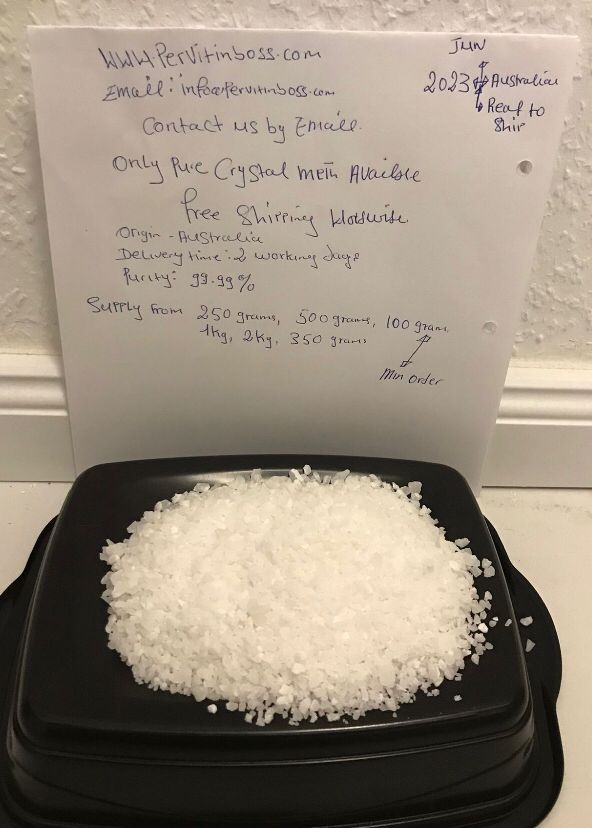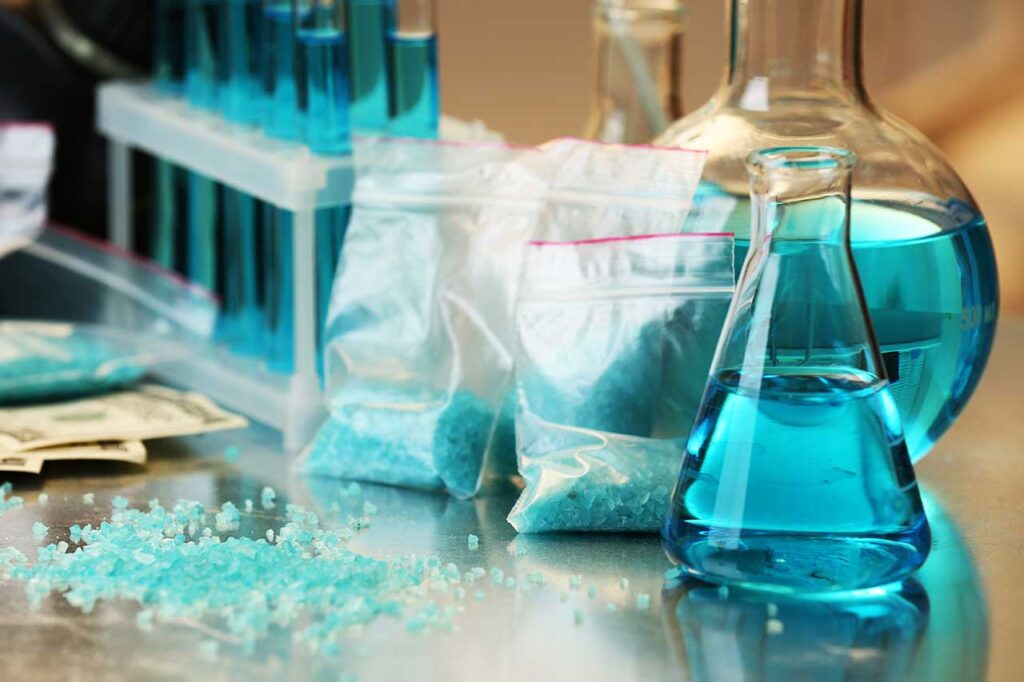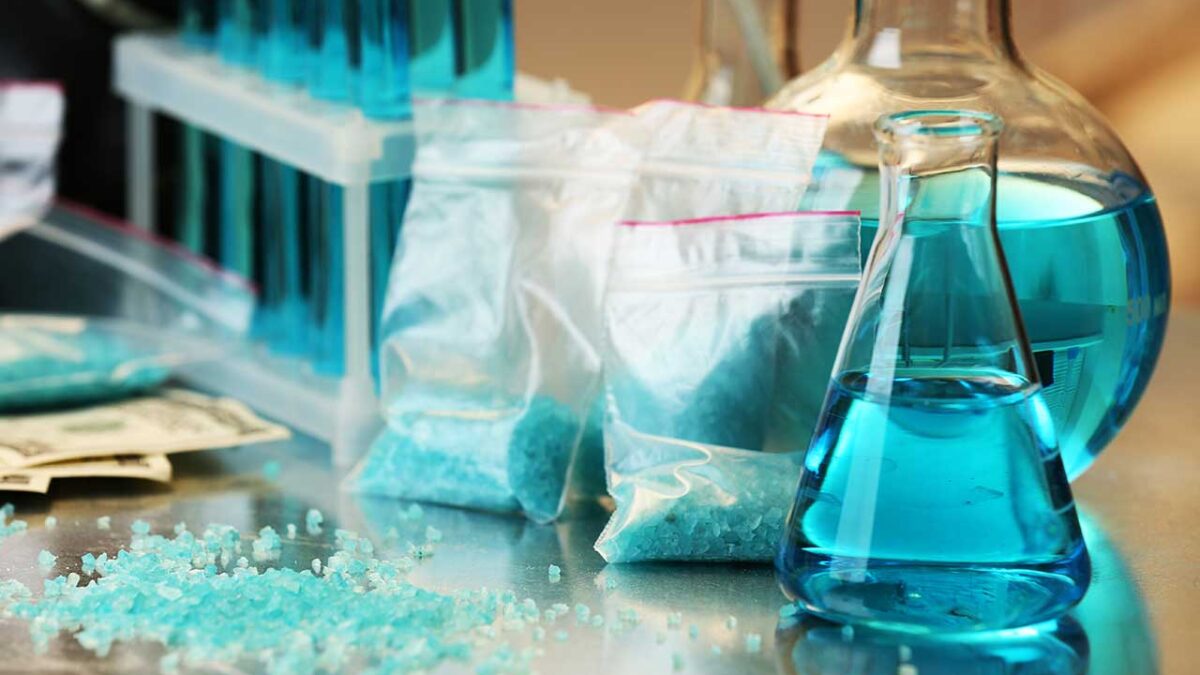Is blue crystal meth real

White Crystel Meth drug

Crack droga
Blue Methamphetamine: Is It Real?
If you’ve ever watched the hit TV show Breaking Bad, then you may be familiar with blue methamphetamine. For years, viewers watched Walter White’s downward spiral from mellow chemistry teacher to drug kingpin as he manufactures methamphetamine. The show introduced the concept of blue meth to millions of viewers, but rumors of this drug seemed to have existed way before the show premiered in 2008. Today, we’re debunking the myths about Breaking Bad’s blue meth. contact supplier

Breaking Bad” and Blue Meth
In the AMC drama Breaking Bad, the main characters Walter White and Jesse Pinkman create 99.1% pure crystal meth. The chemistry teacher turned drug kingpin reveals that the drug comes out blue because White used a chemical called methylamine instead of Sudafed (pseudoephedrine) to make the drug. Is blue crystal meth real
Due to its color, the drug is eventually coined “blue sky meth”. Throughout the show, characters were especially attracted to this new form of meth because of the superior high it produces.
However, despite its purity, no one in the show overdoses. Despite having limited success during its initial manufacture by White and Pinkman, blue methamphetamine eventually became a widespread success due to its quality and purity, gaining popularity in the U.S. as well as Europe.
Blue meth was Pinkman’s and White’s signature and the foundation of their drug empire, which eventually became the largest meth operation in U.S. history (in the show, of course).
Is Blue Meth Real?
Yes, blue meth is real, but it isn’t the same kind that White and Pinkman made in Breaking Bad. Usually, pure methamphetamine is white or clear because it reflects all wavelengths of visible light.
Purity of a drug is measured on the uniformity of its chemical composition, and even the smallest impurities can add color to the drug. Despite this, blue meth is not a myth nor is it fiction.
Several years ago, reports of “Smurf dope” being sold in Utah and Kansas made headlines. At the time, law enforcement believed that coloring was being added to meth so drug dealers and users can easily identify who made it.
Kansas police even speculated that meth was being dyed blue to mimic the crystal meth in Breaking Bad. Blue methamphetamine was also found during several major drug busts.
In a 2013 drug raid, the sheriff’s department in Canadian County, Oklahoma found 40 pounds of blue meth, which was estimated at $2.3 million. Blue meth was also confiscated in New Mexico the year after.
Additionally, other reports of flavored and colored versions of meth hit the drug scene a few years before in 2010. From a strawberry-flavored version of meth called “Strawberry Quick” to “Smurf dope”, various formulations of methamphetamine were flooding the drug market. Is blue crystal meth real

But was this really a new kind of meth? Nope.
Although blue meth is real, it’s merely regular methamphetamine mixed with colored chalk, a tactic used by some drug dealers to make a name for themselves and distinguish their products from others. Regardless, while blue meth wasn’t necessarily a new, purer form of meth as depicted in Breaking Bad, these colored and flavored versions of the drug increased the risk of drug use among teens and young adults.
Dangers of Real Methamphetamine
Whether it’s blue or pink, methamphetamine is a real drug that’s been around since 1919. It’s a highly addictive and dangerous central nervous system stimulant that’s illegally made and sold on the streets.
Meth is one of the most commonly trafficked and abused drugs in the world. It’s notorious for the intense high it produces, as well as its recognizable impact on one’s physical appearance.
Most meth users are identifiable by severe wrinkling and premature aging and skin problems like ulcers, scabs, scratches, and scars. As a drug with a high potential for abuse, meth can lead to addiction within a few uses.
Common side effects of methamphetamine include:
- Euphoria
- Increased activity and alertness
- Decreased appetite
- Increased breathing
- Rapid/irregular heart rate
- Hyperthermia (increased body temperature)
Long-term meth abuse can lead to further health complications, such as cardiovascular disease, psychosis, changes in brain structure and function, aggressive and violent behavior, memory loss, tooth loss and decay (meth mouth), skin disease, and of course, addiction. As exciting or adventurous as the drug trade may seem in a TV drama, the reality is much bleaker. Is blue crystal meth real
Help for Meth Addiction
If you or a loved one has developed an addiction to methamphetamine, recovery is possible. No matter how long you’ve used this drug, the specialists at our Massachusetts treatment center are dedicated to administering evidence-based care to assist all patients in achieving long-term sobriety.
Starting with medically monitored detox, patients at our facility are slowly weaned off of drugs under the 24-hour care and supervision of our medical team. To alleviate withdrawals, patients are given medication on an as-needed basis to make recovery more comfortable.
Following detox, patients can then move onto methamphetamine addiction treatment, during which they will receive the guidance of our counselors as they learn relapse prevention skills and identify the underlying factors of their conditions. Our inpatient drug rehab in Massachusetts even offers family therapy for the loved ones of patients, as well.

